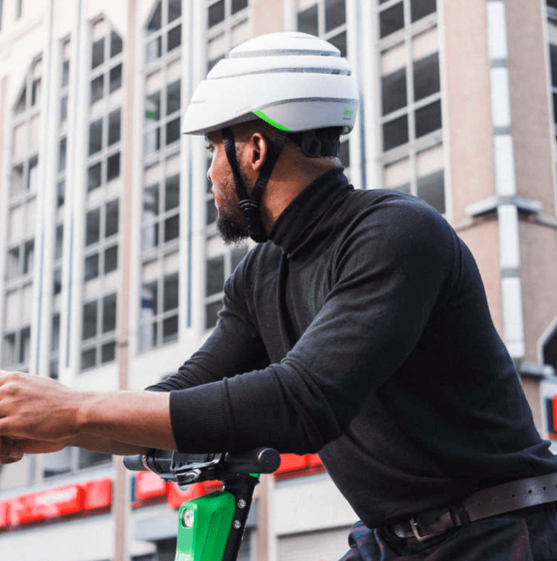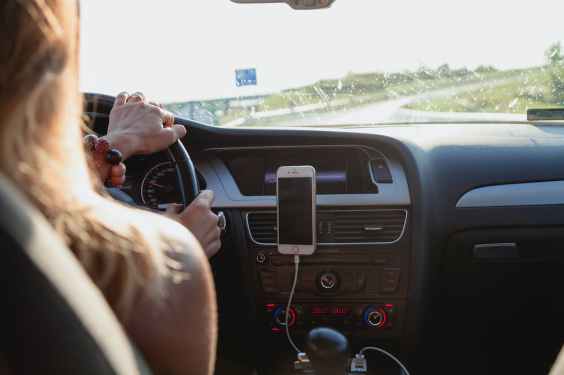Only 17.2 percent of the people who ride Lime scooters self-identify as Black or Latinx, a recent survey has revealed — and the company is responding with a slate of policies to help reckon with the broader impacts of racism in transportation.
The rare insight into the racial demographics of a major micromobility company's ridership data came from a February 2020 survey conducted by the company. Lime CEO Wayne Ting highlighted the stat in a recent blog post, adding that the company recognizes "that transportation has historically been used as a way to perpetuate systemic racism, and Lime believes it plays a central role in helping Black and Latino residents, particularly in disenfranchised neighborhoods, to access bikes and scooters."
Several studies have explored gender imbalances in scooter ridership — and helped birth countless memes about White "scooter bros" in techy cities like San Francisco — but this may be the first time a micromobility company has openly acknowledged racial inequities in its customer base. It comes at a time when much of the mobility industry is considering racism in the transportation space— and when Black transportation leaders like Oonee's Shabazz Stuart are pointing out that none of the CEO's of major micromobility firms is Black or Latinx.
There's been little national-scale research or community engagement on the question of why, exactly, e-scooter companies like Lime may be failing to attract Black and Latinx riders — or failing to create a product that's consistently used by non-White residents. For now, perhaps the best (albeit imperfect) stand-in for that research comes from the world of bicycle advocacy, which has found consistent, under-studied barriers to cycling and bikeshare among BIPOC communities — some of which might apply for scooter-share as well.
A 2014 study found that many low-income commuters in Washington, DC — a group that is overwhelmingly Black and Brown — say that they simply don't want to bike. When asked to rank nine possible transportation modes in order of preference, cycling ranked seventh, and bike-sharing ranked ninth. (Taxis were the other least-popular option.)
"Respondents reported more than 30 barriers to cycling," the researchers noted in a write-up. "Physical safety (32.6 percent), distance (30 percent) and comfort/cold/sweating (25.4 percent) were the most common objections. Other barriers included the difficulty of carrying bulky items, work attire, not knowing how to ride, theft risk, poor health or disability, the slower speed, 'laziness,' and a lack of desire.
"One respondent said, simply, 'I just want a car.'"
But occasional research like this fails to fully capture the barriers that non-White road users face. As Destiny Thomas pointed out in a recent article for CityLab, anti-Black vigilantism and police brutality are very real barriers to street safety to Blacks, Indigenous and people of color that might to easily get lumped under the blanket category of "physical safety," which White cyclists might more readily associate with traffic violence.
"Until Black people are no longer being hunted down by vigilantes, white supremacists and rogue police, private vehicles should be accepted as a primary mode of transportation," Thomas wrote.
And even less dedicated research has been done on the complex and highly individual reasons why non-White road users might actively choose cars, rather than deciding against scooters and other sustainable transportation modes. Private motor vehicle ownership often represents status, power, and upward social mobility in American society, as evidenced by the fact that recent immigrants to the U.S. are twice as likely to travel by bicycle when they first arrive in the country, but typically stop riding within four years as their incomes rise.
Lime, for its part, is responding to the revelation of racial disparities in its own ridership with a raft of new policies designed to address barriers and promote the benefits of scootering. The company has committed to reexamining its service areas to make sure scooters are available in Black neighborhoods, and even made headlines in Chicago last week for offering 50 percent discounts for trips originating in predominantly Black neighborhoods on the west and south sides of the city. They also restated their commitment to supporting the work of local racial equity nonprofits devoted to fighting police brutality and other street safety concerns that have a unique impact on non-white road users, and promised to hold more education initiatives like their popular "First Ride Academy" in communities of color.
Time will tell if the initiatives will work — and if research and community engagement dollars will be devoted to making the micromobility revolution truly accessible for all.






